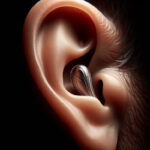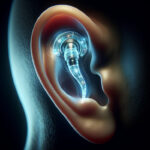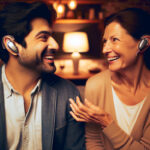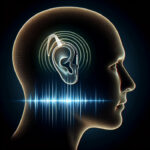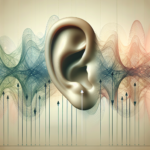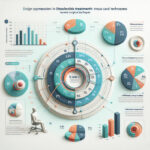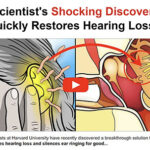This 30 Second Technique is Shockingly Effective
Technological Advances in the Treatment of Binaural Hearing Loss

Introduction to Binaural Hearing Loss
Understanding binaural hearing loss is crucial for recognizing the nuanced challenges it presents. This condition affects both ears, leading to difficulties in sound localization and understanding speech in noisy environments. It can stem from various causes, ranging from genetic predispositions to exposure to loud noises. Binaural hearing loss not only impacts one's ability to hear but also can have profound effects on daily communication, social interactions, and overall quality of life.
The impact of binaural hearing loss extends beyond the auditory system. Individuals with this condition often experience heightened levels of stress and fatigue due to the increased effort required to listen and communicate. It can also lead to social withdrawal and emotional distress. In children, it may affect language development and academic performance. Hence, the pursuit of effective treatments is not just about restoring hearing, but also about improving life's overall experience for those affected.
Advancements in the treatment of binaural hearing loss are paramount for enhancing the lives of millions worldwide. With each technological breakthrough, we move closer to replicating natural hearing experiences and providing solutions that seamlessly integrate into daily life. These advancements promise not only improved auditory function but also greater independence, confidence, and social connectivity for individuals grappling with hearing impairments.
Historical Treatments for Binaural Hearing Loss
Early devices for hearing amplification were rudimentary at best, often cumbersome and minimally effective. Ear trumpets and acoustic horns served as the first tools to aid those with hearing loss, channeling sound into the ear canal. These analog devices were a far cry from today's sophisticated technology, but they laid the groundwork for the development of modern hearing aids.
The evolution of hearing aids has been marked by significant milestones. Transistor-based hearing aids in the mid-20th century offered more portability and discretion, a welcome change from the bulky devices of the past. These analog electronic aids improved the user experience but still lacked the finesse in sound quality and customization that digital technology later brought to the table.
Breakthroughs in binaural hearing solutions have been transformative. The shift from analog to digital hearing aids allowed for precise sound amplification and processing, revolutionizing the way we address binaural hearing loss. Modern devices can be fine-tuned to match individual hearing profiles, greatly enhancing the clarity and richness of sound for users.
Digital Hearing Aids and Binaural Processing
Advancements in digital sound processing have dramatically changed the landscape of hearing aid technology. Digital hearing aids can differentiate between speech and noise, enhancing the former while suppressing the latter. This results in a clearer auditory experience, especially in environments with background noise.
Wireless technology and hearing aid connectivity have further expanded the capabilities of hearing devices. Today's hearing aids can seamlessly connect to smartphones, TVs, and other devices, providing a more integrated and user-friendly experience. This connectivity not only offers convenience but also opens up a new realm of possibilities for personalized hearing solutions.
Directional microphones and noise reduction features in modern hearing aids have been game-changers for individuals with binaural hearing loss. These features allow users to focus on sounds coming from specific directions while minimizing background noise. This technology is particularly beneficial in social settings, where the ability to engage in conversations can be significantly hindered by ambient noise.
Cochlear Implants and Binaural Hearing Restoration
Cochlear implants are a groundbreaking solution for individuals with severe binaural hearing loss, where traditional hearing aids are no longer effective. These sophisticated devices bypass the damaged parts of the ear and directly stimulate the auditory nerve, providing a sense of sound to the user.
The role of bilateral cochlear implants in binaural hearing is profound. By implanting devices in both ears, it is possible to restore a more natural hearing experience, allowing for improved sound localization and speech comprehension. This binaural approach can significantly enhance spatial hearing and the overall quality of life for recipients.
Recent technological improvements in cochlear implants include more refined electrode arrays for better sound resolution and advanced processors for improved sound quality. Innovations in battery life and device miniaturization have also made these implants more user-friendly and less intrusive in daily life.
Bone-Anchored Hearing Systems (BAHS) and Binaural Hearing
The concept of bone conduction in treating hearing loss is not new, but bone-anchored hearing systems (BAHS) have refined this technique. By directly stimulating the cochlea through bone vibration, BAHS bypass the outer and middle ear, providing an alternative for those who cannot benefit from traditional hearing aids due to ear canal or middle ear problems.
When comparing BAHS to traditional hearing aids, several advantages emerge. BAHS are particularly useful for individuals with conductive or mixed hearing loss, or for those with single-sided deafness where binaural hearing cannot be restored. These devices offer clarity in sound transmission and are often more comfortable for long-term wear.
The latest developments in bone-anchored hearing technology include improved sound processors, stronger implant materials, and more discreet design options. These advancements contribute to a higher acceptance rate among users and a better overall auditory experience, encapsulating the significant strides made in treating binaural hearing loss.
Hearing Loss Management Software and Apps
Personalized hearing loss management through mobile apps represents a leap forward in user empowerment. These applications allow individuals to adjust their hearing aid settings in real-time, tailor sound profiles to specific environments, and even track their auditory health over time.
Integrating artificial intelligence (AI) for better hearing aid performance has led to smarter devices that can learn from user interactions. AI-driven hearing aids can adapt to changing soundscapes, improve speech intelligibility, and even reduce listening effort, providing a more natural hearing experience for users.
Real-time language translation and speech-to-text capabilities have expanded the functionality of hearing aids beyond mere sound amplification. With these features, users can engage in conversations across language barriers and receive written transcripts of spoken language, making communication more accessible and inclusive.
The Future of Binaural Hearing Loss Treatment
Gene therapy and regenerative medicine hold promise for the ultimate resolution of binaural hearing loss. By targeting the underlying genetic causes or regenerating damaged auditory cells, these approaches aim to not just treat but cure certain types of hearing loss.
The potential of stem cell research in hearing restoration is another exciting avenue. Scientists are exploring the use of stem cells to regenerate the sensory hair cells in the inner ear, which are critical for hearing. Success in this area could lead to treatments that reverse hearing loss rather than just compensate for it.
Innovations in hearing aid design and functionality continue to emerge, with a focus on creating devices that are more effective, comfortable, and aesthetically pleasing. Future hearing aids may feature advanced biometric sensors, extended battery life, and even greater connectivity options, reflecting the dynamic nature of technological progress in this field.
Conclusion: Embracing Technological Advances for Better Quality of Life
Summarizing the progress in binaural hearing loss treatment reveals a trajectory of innovation and improved outcomes for those affected. From the earliest acoustic horns to the sophisticated digital devices of today, each advancement has brought us closer to replicating the natural hearing experience.
The importance of continued research and development cannot be overstated. It is through this relentless pursuit of knowledge and innovation that we can anticipate even more effective treatments for binaural hearing loss in the not-so-distant future.
Encouraging adoption of new technologies among patients is critical. As professionals, we must guide individuals with binaural hearing loss towards these life-enhancing tools, fostering a world where the limitations of hearing impairments are continually diminished by the power of technological progress.

Laura Henderson is a health enthusiast and has been interested in healthy and natural methods of eliminating tinnitus and restoring natural hearing for many years.


